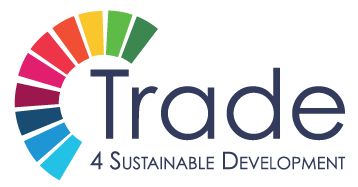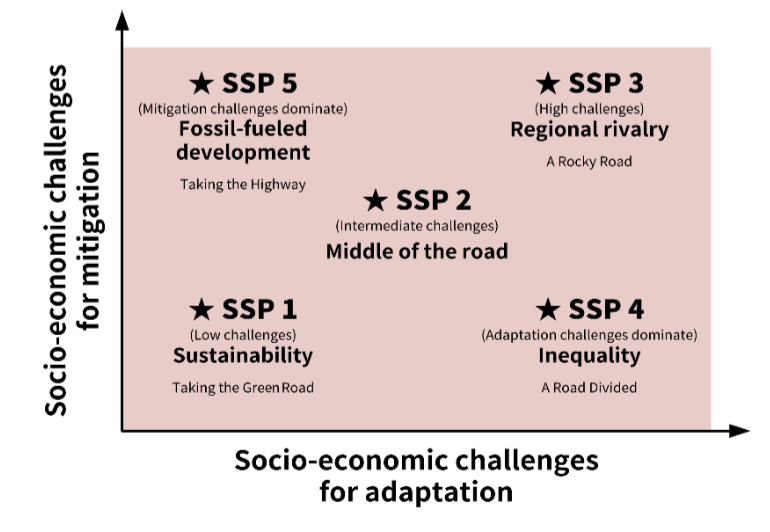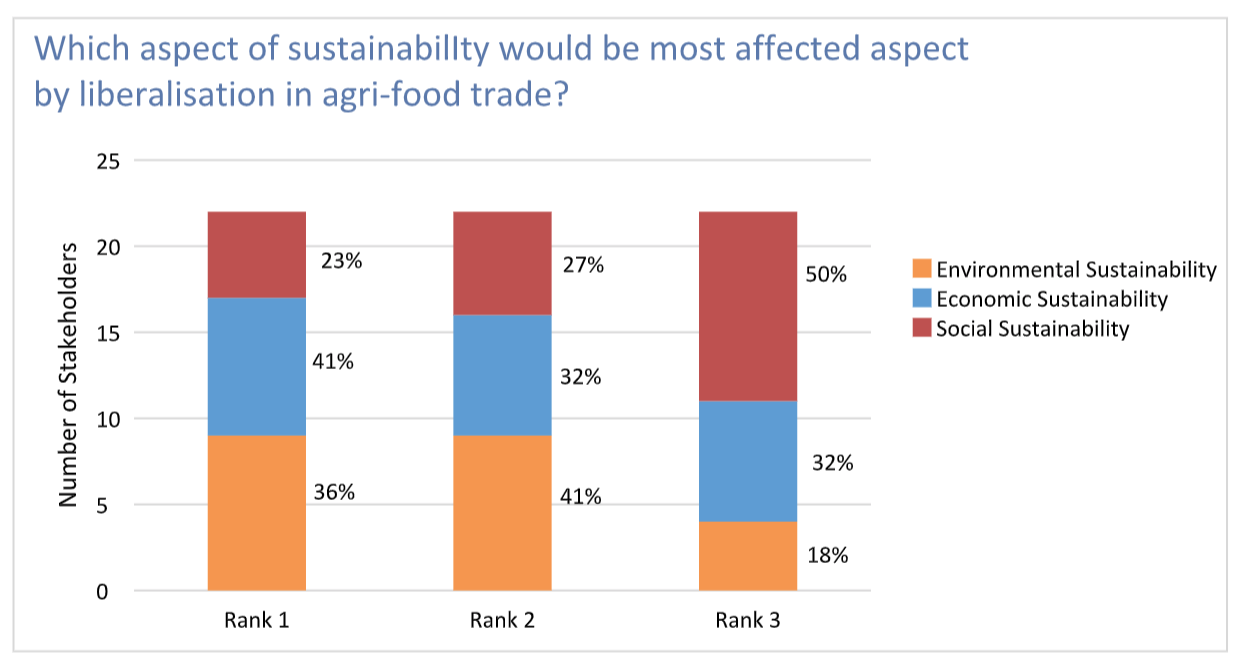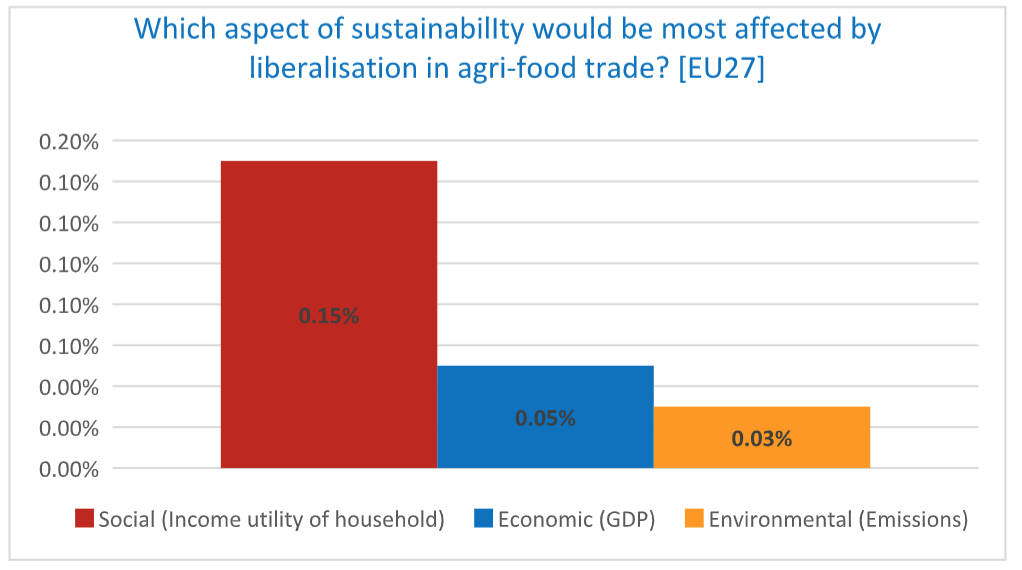When we think of environmental impact of agri-food trade liberalization of EU with the World many questions come up to our minds. Will environmental impact be so important as economic and social ones? How big the impact will be in developed vs developing countries? In what type of future economic situation will those liberalizations take place and hence what type of liberalization is it going to be? Our task is to address those and many other questions by the means of economic model called CGEBox. Then we confront the answers from “our machine” with the opinions of our stakeholders. So on one side, we model: 1 pathways of possible future economic situation in which liberalization will take place, 2. different scenarios of liberalization, 3. Impact of the scenarios on greenhouse emissions in the World, EU and in developed vs developing countries. On the other side, we put the stakeholders’ opinions, collected via survey, next to our results to see how their intuition corresponds to our calculations. We discuss with the stakeholders the above issues and listen to their suggestions. So we experiment with different scenarios of agri-food trade liberalization in safe “laboratory conditions” instead of experimenting on real people in the real World.
Below we shortly address the above mentioned dimensions of our research.
The roads ahead
The future is unknown, but in order to model the liberalization of trade we need to assume some possible scenarios. The model cannot predict what will be the future but can show us the result in the future that we defined. So the scientist developed 5 most possible ways that the future will develop. They are so called “shared socio-economic pathways” (SSPs). There are several indicators describing them but in short, they are called as follows:
SSP1 Sustainability (characterised by low challenges, green road approach and moderate international trade), SSP2 Middle of the road (intermediate challenges and moderate international trade), SSP3 Regional rivalry (characterised by high challenges and international trade strongly constrained), SSP4 Inequality (high level of socio-economic challenges for adaptation, moderated international trade) and SSP5 Fossil-fueled development (high level of socio-economic challenges for mitigation, high international trade with regional specialization in products).
Source: O’Neill et al. (2017) https://doi.org/10.1016/J.GLOENVCHA.2015.01.004
We take into account all of those scenarios and we compare under which situation defined by those scenarios our stakeholders are closest to the model results.
Different scenarios of liberalization
We do not know exactly what future liberalization scenarios will be. That depends on the future goe-political development, which is very much unpredictable as e.g. the war. However, we can still create with the stakeholders several scenarios of future types of liberalizations and propose them to the policy makers. The scenarios which we considered so far are: total liberalization of agri-food trade of EU with the rest of the World, total liberalization of trade in the World, liberalization of agri-food trade by EU with only low GHG emission countries, and total liberalization of trade with low GHG emission countries. We are opened to listen to stakeholders for modelling other options that they think might be useful.
Stakeholders’ opinions versus model results
One of the questions that we asked both the stakeholders and our model was as follows: Which aspects of sustainability would be most affected by liberalisation in agri-food trade – social, economic or environmental? The answers by stakeholders are presented in Figure 1 (after 3 rounds of the DELPHI study) while the answers of our model are in Figure2.
Figure 1 Answers given by stakeholders in 3 rounds (ranks) of Delphi study
Figure 2 Answer given by CGEBox model
As we can see, the stakeholders were right that the social impact of agri-food trade liberalization is going to be the highest due to agri-food trade liberalization. Interestingly they came up to that result after the 3 rounds of the Delphi survey (in step one and two they though that economic and environmental impact will be bigger). It means that they were more accurate the more they interacted with each other. The model was run under SSP1 scenario and additionally provides the answer to what extent the impact was different on the three pillars of sustainability. It is visible from Figure 2 that the social impact was significantly higher than the economic and environmental which were not only much lower but also closer to each other in their magnitude.





Leave a Reply